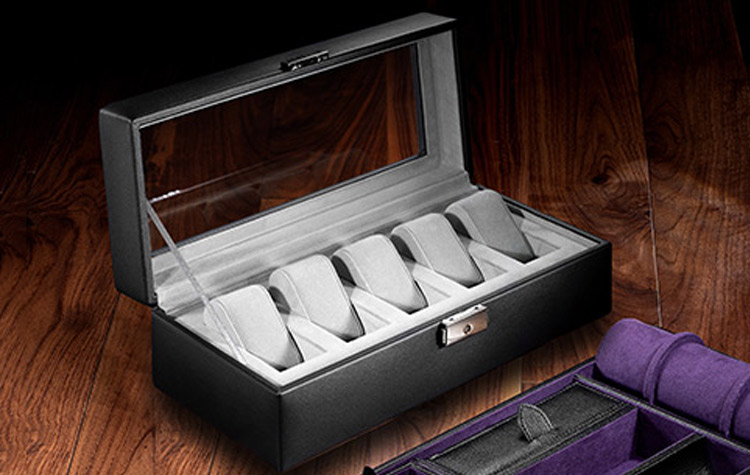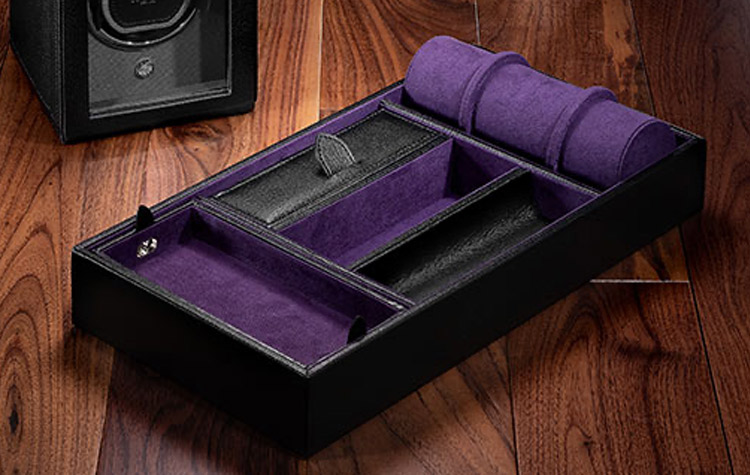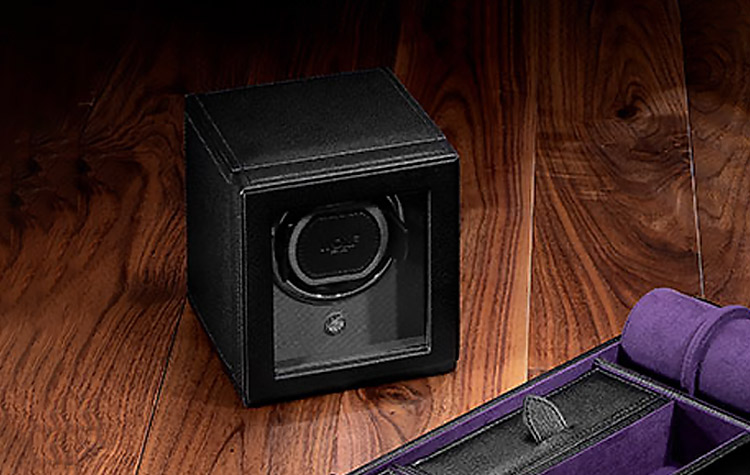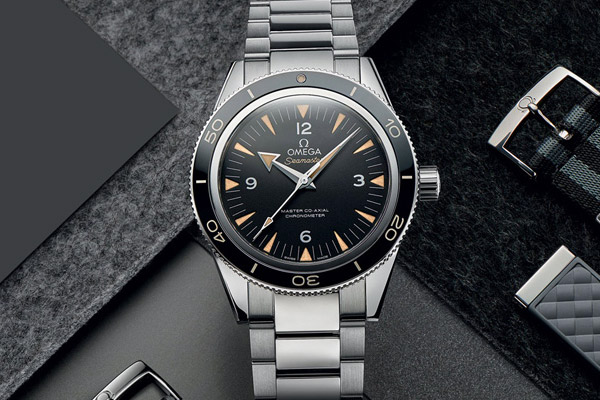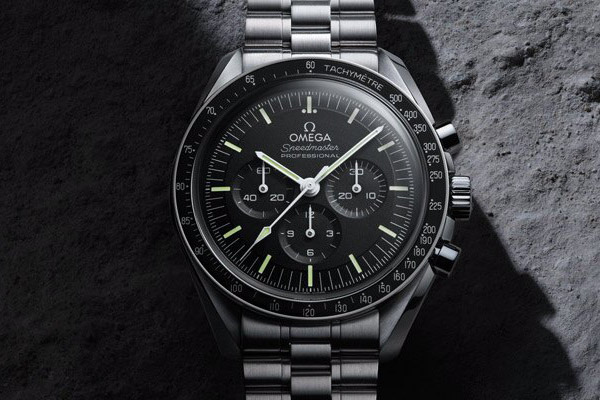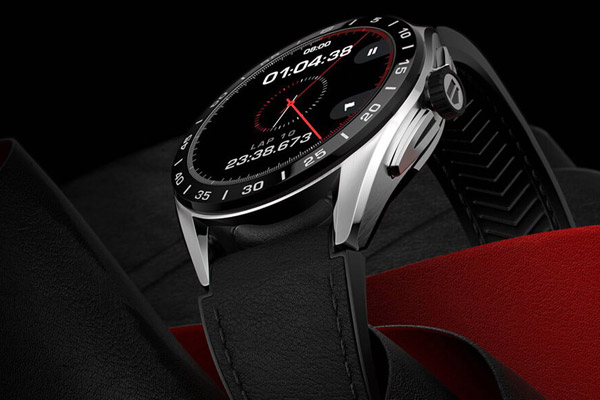
How to clean, care
& service your watch
A highly technical instrument, a watch is designed to be worn every day meaning it needs the utmost care and attention. From how to clean a watch, to watch servicing, our guide has everything you need to know.
SHOP WATCHESWaterproof vs water resistant watch
What’s the difference between a waterproof and water resistant watch? Well, water resistant means able to resist the penetration of water to some degree but not entirely. Waterproof means impervious to water.
In the watch world, water resistant and waterproof can cause some confusion. The term the watch industry usually uses when describing a watch’s performance in water is ‘water resistant’, because no watch is completely ‘waterproof’. There’s always a limit to how much water pressure a watch can resist. However, some people may refer to a watch with extremely high water resistance levels as ‘waterproof’ – but these watches are still not absolutely waterproof.
The water resistance of your watch refers to the static pressure it can withstand, not the actual depth of water it can be used in. For example, 50m water resistance doesn’t mean you can dive up to a depth of 50m. The 50m refers to the pressure it can experience if it was static at a depth of 50m, but as soon as you move the watch, the pressure rises. Therefore, a watch with a water resistance of 50m is actually only suitable for shallow swimming, not diving:
- 3 ATM / 30m: Splash proof and waterproof in small amounts of water
- 5 ATM / 50m: Can be submerged in water. Suitable for shallow swimming
- 10 ATM / 100m: Suitable for swimming, snorkelling and water sports
- 20 ATM / 200m: Ideal for scuba diving
- 30 ATM / 300m: and over: Professional and deep-sea
Top tips for using your
watch in water:
HOW TO CLEAN YOUR WATCH
Cleaning the case
For water resistant watches, use a soft toothbrush and mild soapy water before rinsing with cold water and polishing with a soft dry cloth. Always rinse with warm tap water after immersing it in the sea or a pool, and if your watch has a rotating bezel, rotate the bezel gently while cleaning it to dislodge any debris like sand or salt. If your watch isn’t water resistant, avoid exposing it to any type of moisture. Instead, simply wipe it with a soft dry cloth such as these Connoisseurs Jewellery Wipes.
-
STAINLESS STEEL

Stainless steel watches
Use a soft toothbrush and mild soapy water to clean metal bracelets. Rinse with cold water and use a dry cloth to polish it.
Shop Bracelet Watches -
BRONZE
Bronze watches
When bronze comes into contact with oxygen, a chemical reaction occurs called ‘oxidisation’, which causes a thin layer of oxidised copper to form known as ‘Patina’. This coating protects the underlying materials against corrosion and changes the colour of the bronze itself. It gives your watch its own individual character and uniqueness, which is pretty cool. Different brands have different cleaning tips:

Clean your watch with warm, soapy water and soft cloth to dry it with. TUDOR recommend to not use any cleaning agents.
Shop TUDORShop Bronze Watches
Oris recommend you don’t remove the patina as it acts as a natural protective layer for bronze. However, if you discover unsightly marks, clean your watch carefully by mixing salt with a little vinegar and rubbing it in using a soft brush. Rinse carefully with water.
Shop ORIS -
CERAMIC

Ceramic watches
Ceramic is extremely high scratch resistance, so your ceramic watch won’t pick up small scratches and marks. However, ceramic is much less resistant to shattering so be careful not to drop your watch on a hard floor. To clean ceramic, a soft toothbrush and some warm, soapy water is all you need. Rinse with cold water and use a dry cloth to polish it.
Shop Ceramic Watches
How to clean watch straps
Leather watch strap
For leather straps, avoid getting it regularly damp, exposing it to direct sunlight and contact with chemicals like perfumes, solvents, and detergents. It’s a good idea to clean your leather strap after any form of activity, as dust, dirt and sweat can cause stains and odours.
Shop Leather Strap WatchesRubber watch strap
Like leather straps, rubber straps shouldn’t be exposed to chemicals like perfumes, cosmetics or oily products. As a lot of divers’ watches use rubber straps, it’s important to remember to clean the strap with warm water after wearing it in the sea to prevent the high salt content from damaging the strap.
Shop Rubber Strap Watches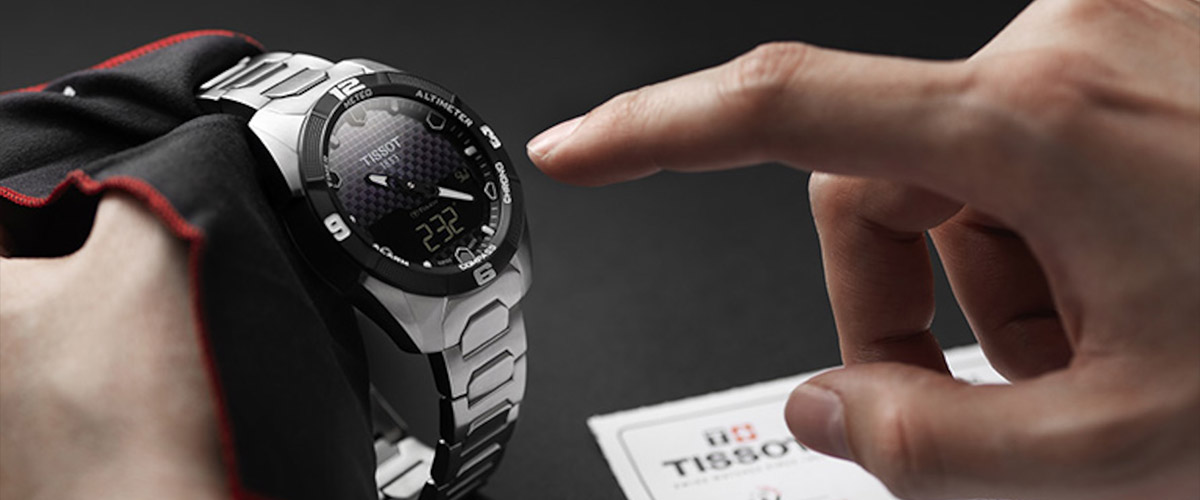
Professional polishing
Polishing your watch is slightly different to cleaning it. Cleaning removes dirt and grime, whilst polishing removes scratches and restores shine. If you’d like your watch polishing, we recommend you bring it into store and one of our experts can do it for you, or we can send it off to the brand.
Find Your Nearest StoreHelpful hint: if you need your watch strap altering, we’d recommend either using our watch strap size chart or bringing it into store where our experts can help.
View the GuideWAYS TO STORE YOUR WATCH SAFELY
Storing your watch
Another way to help increase the lifespan of your watch collection is to make sure you’re storing them correctly. Leaving your watch on the side or in a draw can scratch it (amongst other things), so it’s important it has a safe place for when you’re not wearing it.
Things to avoid
Receive a free gift worth up to £350
when you purchase a luxury watch
For qualifying luxury watch purchases, get an extra wow with an instantly redeemable gift card*.
Spend £1,000 - £1,999 and get a £150 gift card, spend £2,000 - £4,999 for a £250 gift card, or spend over £5,000 and get a £350 gift card.
*Excluding OMEGA, Breitling and TAG Heuer watches. Gift card must be used in one single transaction only. T&Cs apply.
Find Out More Shop Luxury WatchesWATCH MOVEMENTS
Learning the watch movements
-
QUARTZ
Quartz watches are powered by batteries which need changing over time. If you’re wondering how long do watch batteries last, on average the life of a quartz watch battery is around two to three years. The more functions a watch has, the quicker the battery will run out. Some quartz watches are equipped with battery end of life indicators, where the second hand will commonly jump in five second intervals when the battery is running out.
Shop Quartz Watches -
MECHANICAL
Wondering how does a mechanical watch work? Well, a manual mechanical movement is the oldest type of watch movement made and requires daily winding in order to work. Here’s how:
- Remove your watch from your wrist before winding.
- Always wind your watch fully at the same each day, being careful not to force the crown.
- It should be wound until you feel tension or tightness on the crown.
- Stop winding as soon as you feel resistance, as forcing the crown can damage the mechanisms.
-
AUTOMATIC
An automatic movement was first introduced in the 20th century. It’s powered by movement and therefore winds itself whilst worn on the wrist, so it doesn’t need daily hand-winding. You can discover more about how to wind your automatic watch with our helpful guide.
Discover The Guide
Shop Automatic Watches
Servicing your watch
-
MAINTENANCE SERVICE
We recommend you have a maintenance service on your watch every 18 to 24 months, although this will depend on the brand, the watch model and your own personal use. Refer to your specific user guide to double check what timings you should be adhering to. This will help ensure its water resistance and accurate performance of the movement.
This service includes (although it might vary slightly by brand):
- Rating/ regulation check
- Replacing the crown, gaskets and battery for quartz movements
- Water resistance control
- Cleaning of the case and bracelet
- Overall quality control check
-
COMPLETE OVERHAUL
A complete overhaul service on your watch is recommended every four to five years, although again the frequency we recommend will depend on the brand and your own personal use.
This service includes (although it might vary slightly by brand):
- Dismantling the movement and cleaning, oiling, regulating, reassembling all of the parts and checking all of the functions
- Repairing or replacing any worn movement parts
- Replacing the crown, gaskets and battery for quartz movements
- Water resistance control
- Cleaning of the case and bracelet
- Final quality control
WATCH FAQS
We answer your watch FAQs
From changing your watch battery to the most googled questions about luxury watches, discover the answers to everything you want to know.
